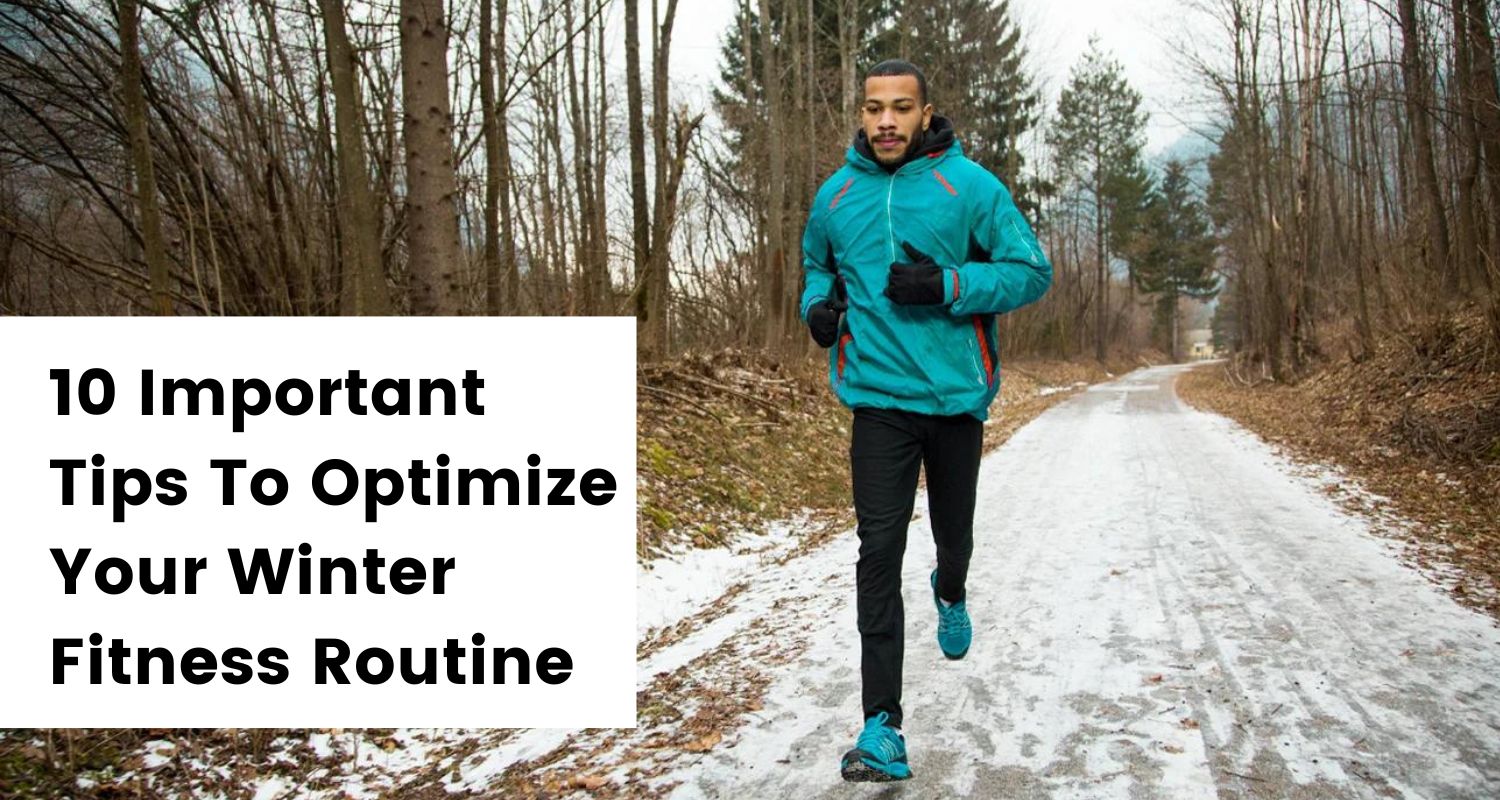As the temperature drops and the frosty winds blow, it’s easy to be tempted to hibernate indoors during the winter. However, the winter season shouldn’t be a reason to slack off on your fitness routine. Cold-weather workouts can bring unique benefits and challenges to enhance overall well-being.
In this blog, we’ll explore 10 winter fitness tips to help you maximize your workout routine in the cold.
1. Layer Up for Warmth and Flexibility for Your Winter Fitness Routine
The first rule of thumb is to dress appropriately to work in the cold weather. Layering is crucial for regulating your body temperature and ensuring comfort during your exercise. Start with a moisture-wicking base layer to keep sweat away from your skin.
Add an insulating layer to retain body heat, and finish with a waterproof and windproof outer layer to shield yourself from the elements. Protect your extremities with gloves, a hat, and warm socks to prevent heat loss.
2. Choose the Right Footwear For Your Workouts
Cold and wet conditions can make surfaces slippery, posing a risk of injury. Invest in winter-specific athletic shoes with good traction to stabilize and prevent slips. Alternatively, add ice cleats to your regular shoes for grip in icy conditions. This simple adjustment can significantly affect your safety and workout in the winter weather.
3. Stay Hydrated throughout Your Winter Fitness Routine
Even in cold weather, staying hydrated is crucial for optimal performance. The dry winter air can dehydrate you faster than you might realize, and dehydration can affect your energy levels and recovery.
Keep sipping water throughout your workout, and consider using an insulated water bottle to prevent it from freezing. While you may not feel as thirsty in the cold, your body still needs adequate fluids to function efficiently.
4. Warm-up effectively For Your Winter Fitness Routine
In cold weather, your muscles and joints may take longer to warm up, making a proper warm-up even more crucial. Begin your winter workout with dynamic exercises that engage different muscle groups, such as jumping jacks, leg swings, and arm circles.
This prepares your body for more intense movements and helps increase blood flow and flexibility. A well-executed warm-up is your ticket to a safer, more effective cold-weather workout.
5. Embrace Indoor Workouts
Be bold and take your workout indoors when the weather is too harsh. Gyms, fitness studios, and even your living room can become excellent spaces for staying active during the winter.
Engage in indoor cycling, treadmill running, or strength training to maintain your fitness routine without exposing yourself to the harsh winter elements. Variety is the key to a successful and sustainable winter workout plan.
6. Optimize Daylight Hours During Winters
The limited daylight hours during winter can be challenging, but planning your workout during daylight can make a significant difference. Exposure to natural light enhances mood and helps regulate your circadian rhythm.
Aim to exercise during the brightest part of the day, whether a mid-morning jog or an afternoon fitness class. If your schedule permits, consider taking advantage of the weekend for longer daylight workouts.
7. Set Realistic Goals for Your Winter Workouts
Winter weather may bring additional challenges, such as snow-covered trails or icy sidewalks. Adjust your workout goals accordingly, and set realistic expectations. If you usually run long distances, consider shorter, more intense workouts.
Embrace the seasonal changes and focus on different aspects of fitness, such as strength training or flexibility. You’ll stay motivated and avoid unnecessary frustration by adapting your goals to the winter conditions.
8. Protect Your Skin from Winter
Cold and windy weather can be harsh on your skin, leading to dryness and irritation. Before heading out for your winter workout, apply a layer of moisturizer to create a barrier against the elements.
Don’t forget sunscreen, as UV rays can penetrate clouds and cause damage, mainly when reflected off snow. Protecting your skin is not just about comfort; it’s an essential aspect of winter fitness that contributes to your overall well-being.
9. Buddy Up for Motivation for Your Winter Fitness Routine
Exercising in cold weather can be more enjoyable when you have a workout buddy to share the experience with. Not only does it motivate on those chilly mornings, but it also adds a layer of safety, especially in adverse conditions.
Choose a friend with similar fitness goals and commit to supporting each other throughout the winter months. Having a workout partner can turn a potentially solitary activity into a social and rewarding experience.
10. Post-Workout Recovery
After a cold weather workout, prioritize your recovery to ensure your body bounces back effectively. Stretching is crucial to maintaining flexibility and preventing stiffness, which can be exacerbated in colder temperatures.
Treat yourself to a warm bath or shower to raise your body temperature and relax your muscles. Additionally, consider incorporating recovery tools like foam rollers or massage devices to alleviate tension or soreness.
Conclusion
Winter should not be a deterrent to maintaining an active lifestyle. By following these 10 winter fitness tips, you can embrace the cold weather and turn it into an opportunity to enhance your overall well-being.
Whether you choose to brave the elements for an outdoor workout or stay cozy indoors, adapting your fitness routine to the winter season can lead to a healthier, happier you. So, layer up, stay hydrated, and let the chill invigorate your winter workout adventures.

